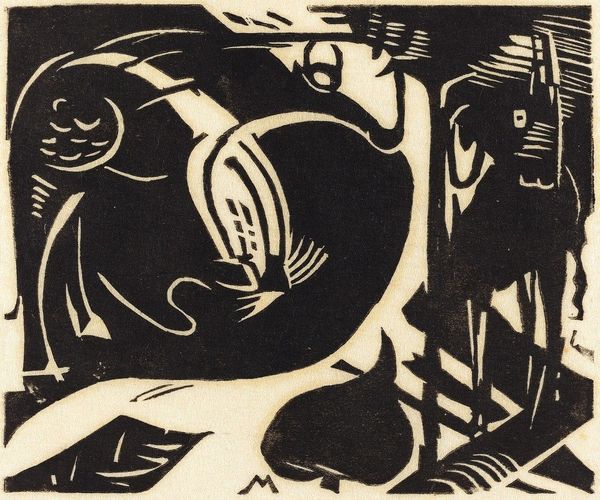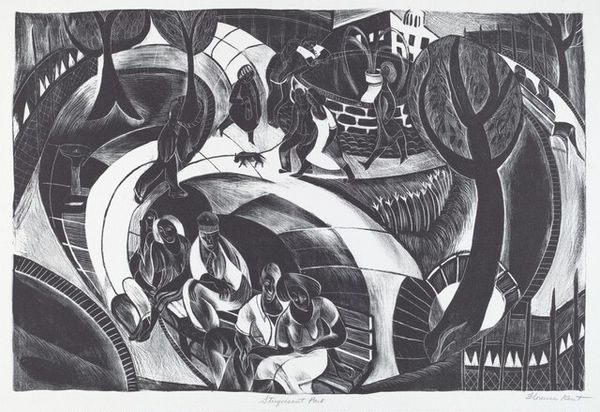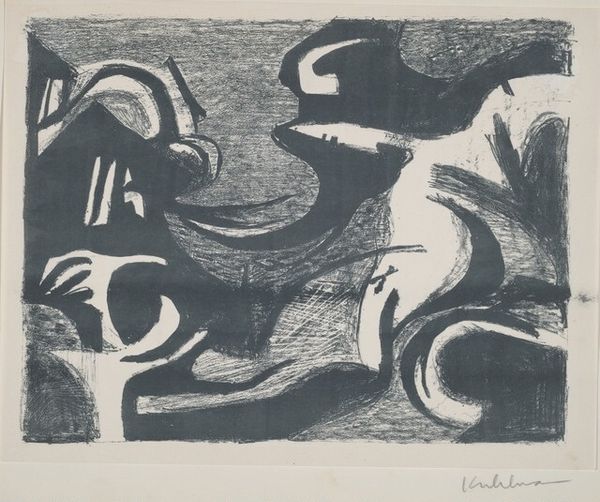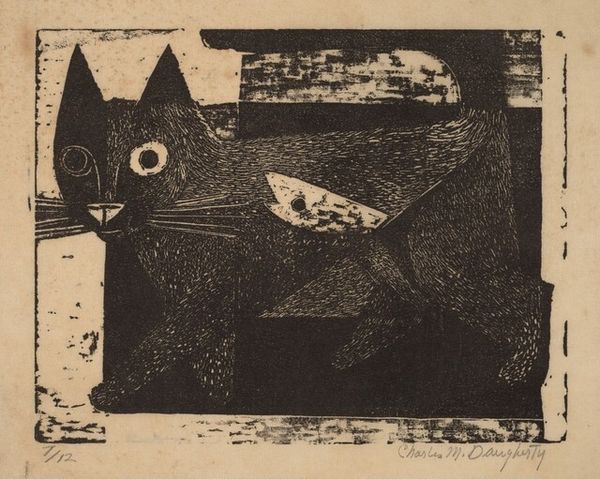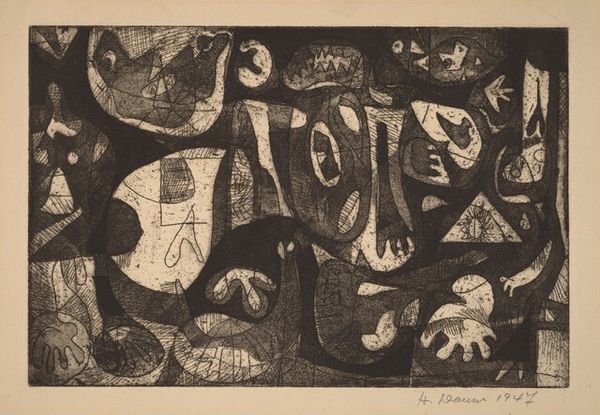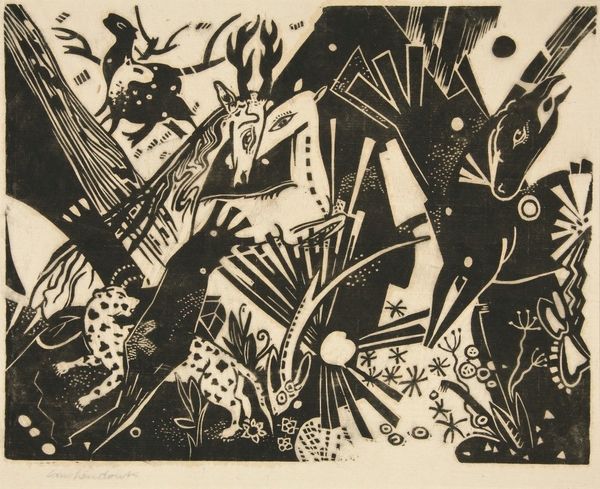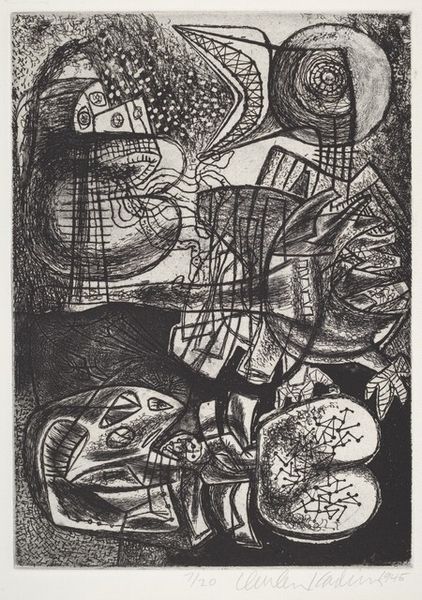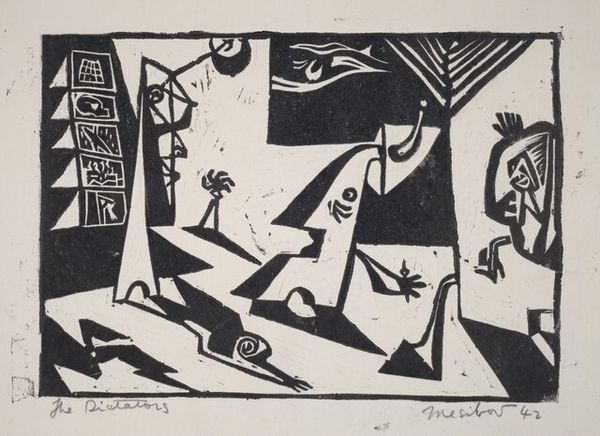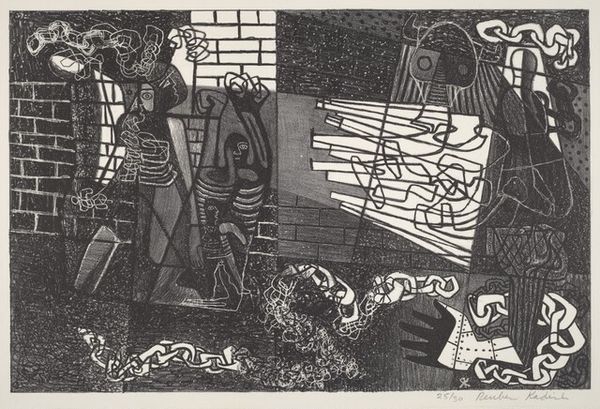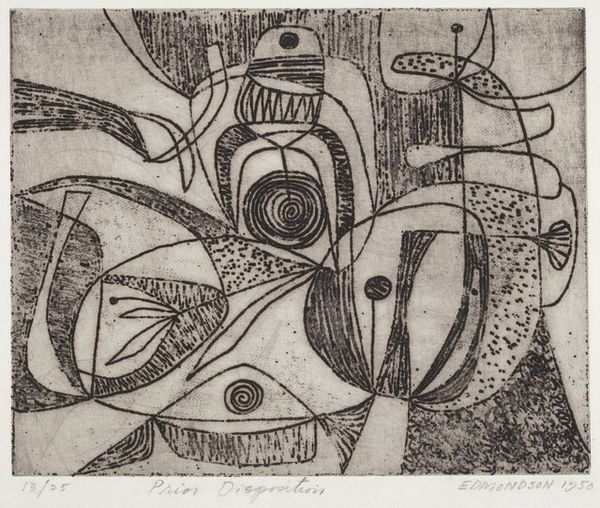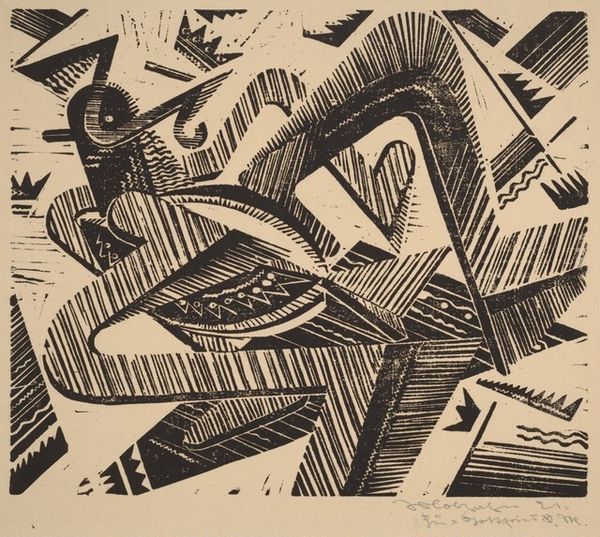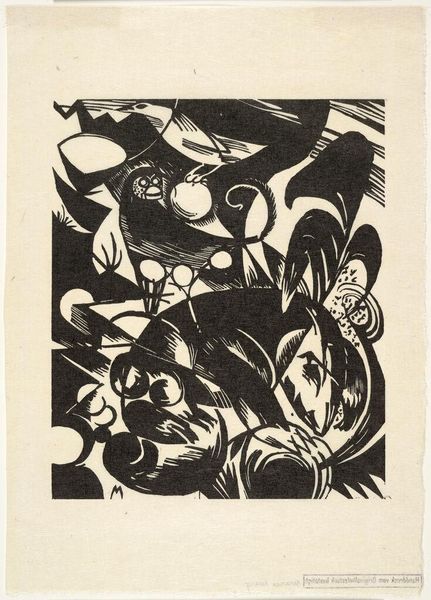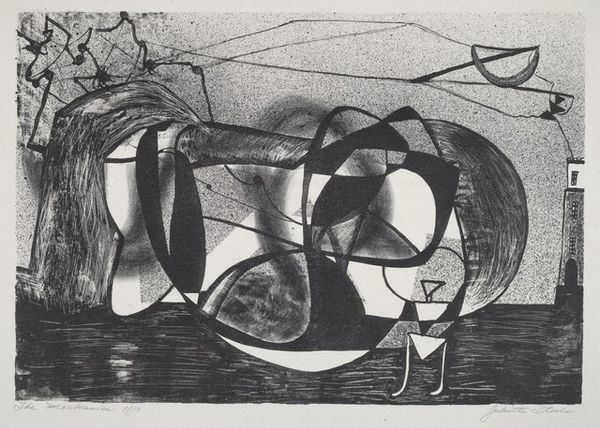
#
portrait
#
pen drawing
# print
#
figuration
#
abstraction
#
line
Dimensions: image: 23.8 × 33.9 cm (9 3/8 × 13 3/8 in.) sheet: 28 × 38.2 cm (11 × 15 1/16 in.)
Copyright: National Gallery of Art: CC0 1.0
Curator: Before us is "Boy and Cat", a print created by Will Barnet in 1946. It presents a compelling, graphic exploration of form. Editor: My first impression is one of striking contrasts—the sharp, angular lines against the softer curves create a somewhat unsettling, dreamlike quality. What printmaking technique did Barnet use to achieve this stark effect? Curator: The work reflects an embrace of simplified forms, achieved by Barnet's sophisticated approach to the print medium, reducing figuration to its most essential elements, blurring distinctions between abstraction and figuration in post-war America. It challenges what was deemed "high art." Editor: Indeed, the limited palette and the strategic use of positive and negative space are quite masterful here, notice how lines define forms and create depth without relying on traditional shading techniques. Curator: He was really challenging traditional notions of composition and representation in response to the anxieties of his time. Editor: The material aspect, the print itself, lends a tactile quality, it's crucial. I feel a raw physicality coming through. Do you know much about his printmaking process? Curator: While details of Barnet's specific process for this work aren't extensively documented, considering the period and his interest in accessible art forms, it likely involved techniques like woodcut or linocut, which align with his commitment to democratizing art production. This allowed for greater accessibility. Editor: Yes, a very thoughtful engagement with material possibilities that reflect broader social movements to democratize the arts. What a captivating print; I’m now looking more deeply into its line quality and structural simplicity. Curator: The image encapsulates Barnet’s exploration of artmaking as a form of labor, reflecting post-war interest in accessibility, in blurring boundaries between different levels of artistic endeavor, and as something to consume. I am considering more deeply the social context around it, and what was consumed.
Comments
No comments
Be the first to comment and join the conversation on the ultimate creative platform.
